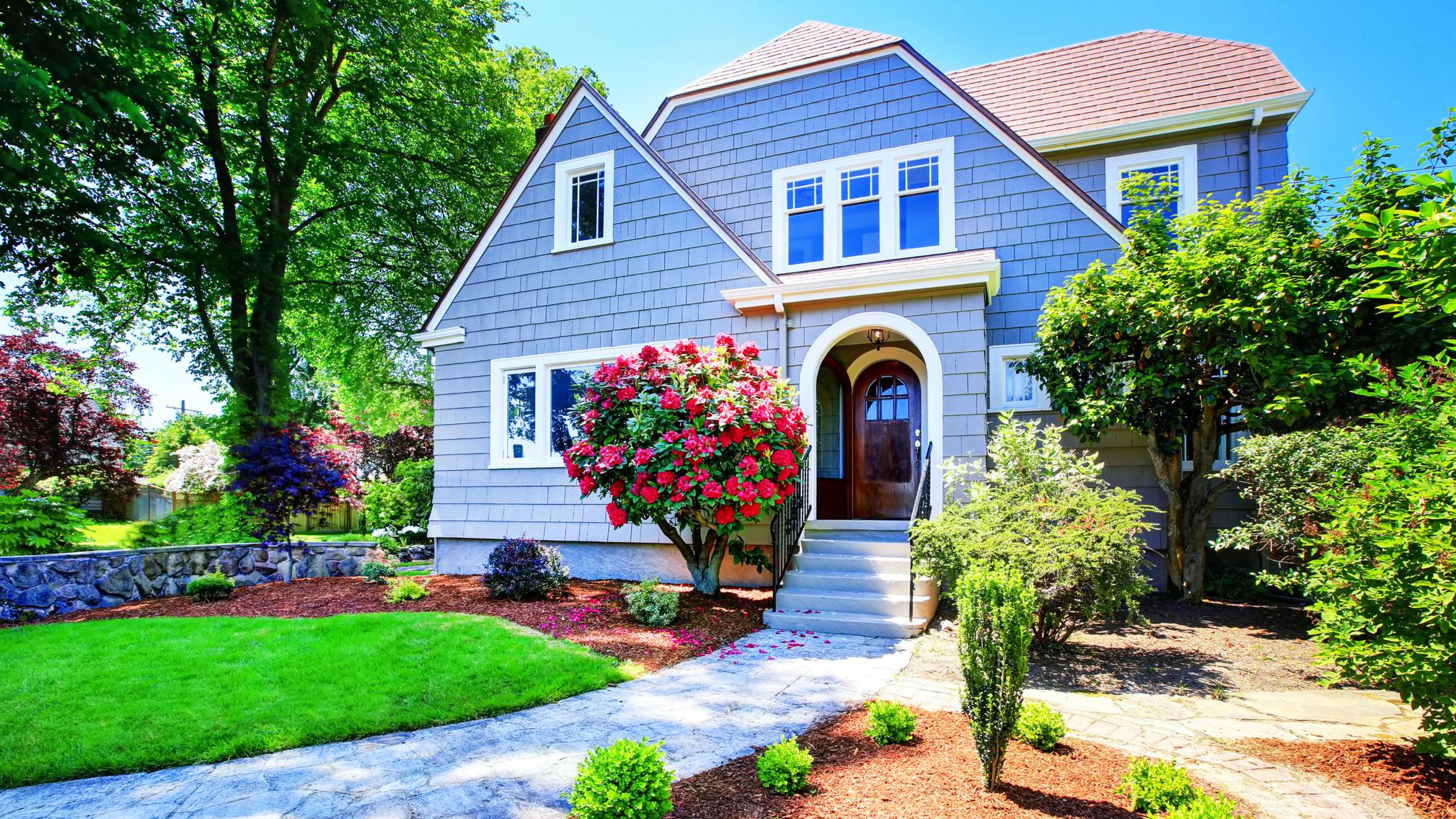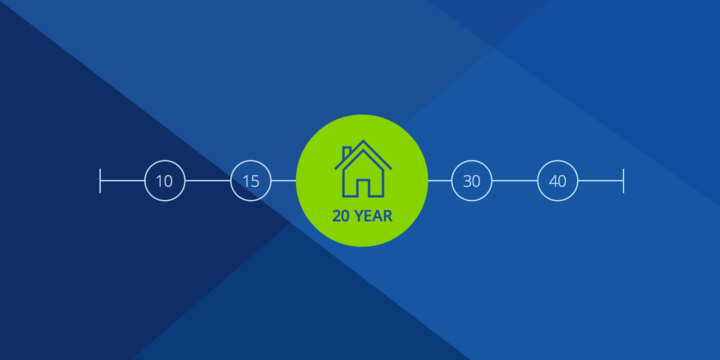Do You Have To Put Down 20% On A House?
When purchasing a new home, having a 20% down payment has significant financial benefits. Here's a look at all the ways a 20% down payment can benefit you.


Written by Alycia Lucio on May 23, 2025
Reviewed by Neil Swanson and Kara Ng
Many first-time homebuyers think they have to put down 20% to get a mortgage loan, but making a large down payment isn’t always necessary. In 2024, only 52% of mortgage borrowers reported putting down 20% or more — up from 2022, when only 42% said the same.
The amount you put down on a house depends on the price of the home you’re buying and the type of mortgage you obtain. Keep reading to learn when a 20% down payment is required, and why you may want to consider putting down 20% if you’re financially able.
When is a 20% down payment required?
Borrowers may need to put down as little as 0% or as much as 20% on a mortgage loan. The percentage you need to put down depends on the type of mortgage you’re taking out. The total dollar amount you need to put down depends on the price of the home you’re buying. Take a look at the minimum down payment requirements for each type of loan, below.
| Loan type | Minimum down payment required |
|---|---|
| Conventional | 3% (for most first-time homebuyers) 3% (for HomeReady and HomePossible programs) 5% (for most other homebuyers) 10% (if used for second home or investment property) |
| FHA | 3.5% (with a credit score of at least 580) 10% (with a credit score of 500-579) |
| VA | 0% |
| USDA | 0% |
| Jumbo | 20% |
Conventional loan
Conventional loans are the most common type of mortgage, since they’re readily available at most banks and other financial institutions. The minimum down payment for a conventional loan is typically 5% for most borrowers. First-time homebuyers, and homebuyers who qualify for HomeReady or HomePossible programs, can usually put down as little as 3% with a conventional loan, as long as they meet lender criteria.
Each lender has its own thresholds regarding credit scores, DTI ratios, and income. Assuming you purchase a $500,000 home with a conventional mortgage as a first-time homebuyer, your 3% down payment would be $15,000. If you were to purchase the same home as an existing homebuyer, your 5% down payment would be $25,000.
In both cases, you’d have to pay private mortgage insurance (PMI) until you reached 20% equity in your home. By putting down 20% upfront, you can eliminate PMI, enjoy better interest rates, and move into your new home owing less on a mortgage. While you won’t remove PMI without 20% down, generally the more you put down the less you pay in PMI.
Compare mortgage options from us at Zillow Home Loans.
FHA loan
FHA loans are backed by the Federal Housing Administration, which allows lenders to offer these loans with more flexible credit requirements and lower down payments. A down payment on a FHA loan is 3.5%, as long as your credit score is 580 or higher.
Assuming you purchase a $500,000 home, your 3.5% down payment on a FHA loan would be $17,500. You’ll need to put down at least 10% if your credit score is between 500 and 579. In this case, you’d have to put down $50,000.
To offer better loan criteria, FHA loans require an upfront mortgage insurance premium (UFMIP) of 1.75% and an annual mortgage insurance premium (MIP) between 0.15% and 0.75% that’s paid over the full loan term. Borrowers who can afford a FHA loan with 20% down will pay a lower mortgage insurance premium and be able to stop paying premiums after 11 years.
VA and USDA loans
Both VA and USDA mortgages are unique in that they require zero down payment. However, these two mortgage options have additional qualifications for borrowers, since they’re backed by different branches of the government than FHA loans.
VA loans help qualified veterans, their spouses, and active duty service members achieve their homeownership goals, while USDA loans help low- or moderate-income borrowers obtain a home in a rural area. Although VA loans and USDA loans don’t require PMI or MIP, they have costs associated with smaller down payments.
VA borrowers usually have to pay a funding fee of 0.5% to 3.3%. USDA borrowers usually have to pay an upfront guarantee fee of 1% and an annual fee of 0.35%. Borrowers who put down 20% on a VA or USDA loan don’t need to pay a VA funding fee or USDA guarantee fees.
Jumbo loan
Jumbo loans are conventional mortgages that cannot be backed by Fannie Mae or Freddie Mac, because the size of the loan is too large to fall within conforming loan limits. This makes jumbo loans riskier to insure than conventional loans. Lenders tend to ask jumbo loan borrowers for higher down payments to offset their increased risk.
Although some lenders require a 20% down payment on a jumbo loan, most lenders ask for a down payment of 5-10%. For 2026, the conforming loan limit is $832,750 for a single-family home throughout most of the United States. Assuming you’re buying a home worth $900,000, you’d need a jumbo loan. If your down payment requirement is 10%, you’d have to pay $90,000 to secure a jumbo loan.
Should you put 20% down on a house?
A smaller down payment can help you purchase a house sooner and have enough money saved for emergencies. Keep in mind, mortgages with small down payments come with greater monthly mortgage payments, which can strain your finances in the future. Many first-time homebuyers will opt for a smaller down payment and then refinance a few years down the road when their equity has increased due to rising home values. This allows them to buy sooner and move into a more affordable home loan without PMI later.
Consider the following when deciding whether to make a 20% down payment.
Will putting 20% down delay your home purchase?
Unless you can tap into existing home equity or have liquid assets readily available, it can take years to save up enough money to make a 20% down payment. This is especially true if your home is more expensive than others, or if you’re taking out a jumbo loan.
Assuming you’re willing to pay $400,000 for a home, making a 20% down payment would require $80,000. If you’re able to save $20,000 a year, it would take you four years to own a home. If you’re single, you might be willing to wait. But if your family is growing, you might want to purchase a home sooner rather than later.
Will putting 20% down deplete your emergency fund?
Draining your savings account to make a large down payment could put you in a difficult situation. Although your down payment is probably your biggest home-buying expense, it’s not the only one you need to save up for. Make sure you have enough in your account to cover an earnest money deposit, closing costs, and other expenses related to homeownership before committing to a 20% down payment.
Will putting 20% down strengthen your offer?
Lastly, a large down payment could help you secure mortgage financing fast, which is crucial in a seller’s market. If there’s a property that a lot of buyers want, but you’re the only one with a mortgage pre-approved for the seller’s asking price, you’re in a great position to secure that property.
What are the benefits of putting 20% down?
For those financially able to put down 20%, there are several benefits for choosing to make a larger down payment. Here are some of the main reasons you might consider a 20% down payment versus a smaller down payment:
Reduces your monthly mortgage payments
The larger your down payment, the less you'll have to borrow, which means your monthly mortgage payments will be smaller. If you pay 20% on a $375,000 mortgage, you’ll only need to borrow $300,000. Keep in mind that interest is calculated based on the amount you borrow, not on the price of the home. So a larger down payment also means fewer interest payments over the life of the loan.
Reduces or removes mortgage insurance
Mortgage insurance is required with most conventional loans and all FHA loans. Putting down 20% eliminates the need for PMI with a conventional loan. PMI can range from 0.58% to 1.85% of your total loan amount. Assuming you purchase a home for $500,000 with a down payment of less than 20%, you might end up paying between $2,900 and $9,250 in PMI costs. If borrowing money with an FHA loan, you’ll be able to remove MIP after 11 years (instead of paying premiums for the full term) and often receive lower mortgage insurance rates.
Lowers your interest rate
Borrowers who make a down payment of 20% reduce the lender’s risk. In turn, lenders might reduce your interest rate. Even a few percentage points could represent thousands of dollars saved over the life of the loan.
Use BuyAbility to get updates on your home buying budget based on current rates.
Reduces or eliminates funding fees
VA and USDA loans don’t require PMI, but they do require funding fees to offset a lender’s risk. VA borrowers need to pay a VA funding fee, which is usually 0.5% - 3.6% of the loan’s total value. USDA borrowers need to pay a guarantee fee, which includes 1% of the total loan amount upfront, and 0.35% of the total loan amount on an annual basis. By making a 20% down payment on a home loan that doesn’t require a down payment at all, you might be able to negotiate removing or lowering funding fees with your lender.
Gives you instant home equity
Another advantage of putting down 20% on a home is the ability to start building equity immediately. Refinancing products, such as home equity loans and HELOCs, usually require 15-20% equity. By putting down 20%, you meet eligibility requirements on day one.
Tags
Thinking about buying but not sure where to begin?
Start with our affordability calculator.
See what you can affordHow much home can you afford?
See what's in reach with low down payment options, no hidden fees and step-by-step guidance from us at
Zillow Home Loans.
Zillow Home Loans, NMLS # 10287. Equal Housing Lender
Calculate your BuyAbility℠
Related Articles
Get a mortgage with Zillow Home Loans
Go from dreaming to owning with low down payment options, competitive rates and no hidden fees. A dedicated loan officer will guide you until you have your keys in hand.

Zillow Home Loans, NMLS #10287. Equal Housing Lender.



